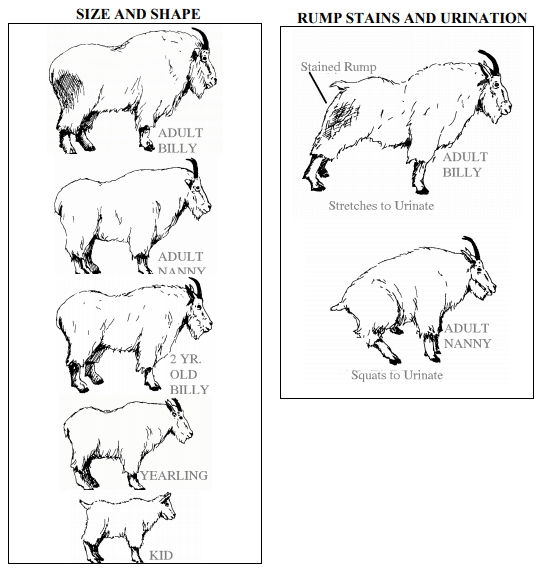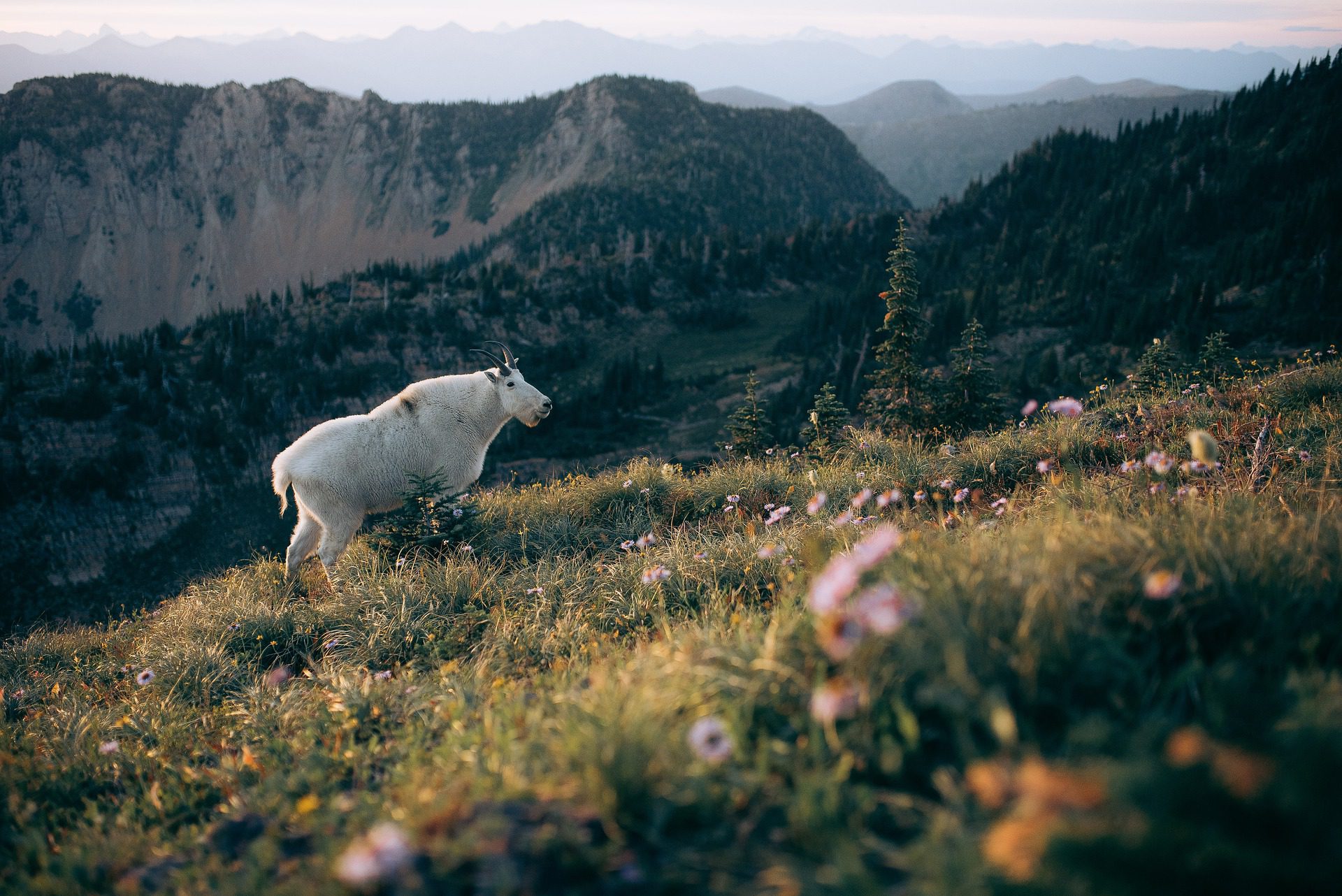Field judging mountain goats is not easy, and you’ll have to do some pre-hunt homework to learn how. Even then, you might not get it right. Nothing about mountain goat hunting is easy. The key to making this determination and evaluating a goat lies in mass of both horns and body.
Field Judging Mountain Goats
1. Determine the Sex

Both males and females have horns, and it is somewhat difficult to discern between the two. In fact, many wildlife departments allow the taking of nannies.
They encourage hunters to avoid nannies and in many cases require an orientation course on sex identification, yet nannies are still mistakenly taken.

Adult Billy
- A mature billy will have a hump on his back or shoulder and will appear “thicker” than a nanny.
- A billy wil stretch out to urinate and will usually have a stained rump.
- Larger horn base, usually wider than the eye.
- Bases are closer together. When viewed straight on the bases will appear to nearly touch on a big billy.
- Horn is heavy throughout its length.
- Horn has gradual curve.
Adult Nanny
- A nanny squats to urinate.
- Wider space between horns.
- Horn is thin throughout its length.
- Nannie horns will commonly rise straight up, only curling back on the upper 1/3 or 1/4 of the horn.
- Horn is straighter with most of the curve near the end.
- Smaller born base- equal to or smaller than the eye.
2. Horn Length
When estimating horn length we must take into consideration two factors.
- The horn will curve backward.
- Long winter coats can hide horn growth at the bases near the skull.
The curvature of the horn can short-change the true length of horns in field observations. It’s a good idea to try and visualize the horns as straight.
If the apparent horn length is visualized as straightened-out, and it reaches the distance from the nostrils to the bottom of the eye, you are looking at a horn length of probably at least eight, but not over nine inches.
If the same comparison yields an apparent length equivalent to the distance from the nostrils to the ear hole, you are unquestionably looking at a records-class billy. Providing his horn tips are not broken and he appears to have a thick base on each horn.
Another useful gauge is the apparent length of the horns compared to the visible length of the ear. For trophy quality, one normally must look for a horn that appears to be two and one-half times the visible length of the ear.
3. Look at the Bases
Good mass on the bases is important. Reviewing the top 100 records-book goats of all-time, you will find the base circumferences range from 6 to 6-6/8″.
*Billy’s have two large black glands directly behind the horns which can be mistaken for extraordinary mass. Nannies do not have this gland.
Online Scoring Tool

4. Hiring an outfitter is recommended.
We can help with that part, just let us know what you’re looking for and we can get you dialed.
Ask Us About a Hunt Request pricing and availability
Discover why thousands of people have trusted Outdoors International to help plan their hunt.
Outdoors International has a team of hand-selected hunting experts to help you book your next hunt. Our job it is to help you in researching, booking and planning a great hunting trip with one of our amazing outfitter partners around the world.
My hunt was absolutely top notch.
The outfitter is a fantastic man and incredibly hard working and knowledgeable, there is no doubt he will do everything within his power to make peoples hunts successful and enjoyable. I plan to do it again with him next year for sure.
Wade Zuver
Our hunt was excellent.
We saw bucks every day along with all other sorts of wildlife. Mountain goats, bears, and foxes were common sights. Fishing and crabbing was special bonus. The food was excellent, the crew was amazing. Outdoors International did a great job of finding exactly what we were looking for.
Jesse Neveau
What an amazing experience!
The hunting lodge was out of this world!, Rooms, food and the scenery were all A+. Our guide was exceptional and had us on Shiras moose all five days. We saw over 30 total with at least 10 bulls. They had a plan for everything including taxidermy and game processing.
Kayla Redmon



LET'S START PLANNING YOUR NEXT TRIP
Please be specific so we can find exactly what you're looking for.